The architectural community experienced a stimulating time at the “Future Lab” of the Architecture Biennale 2023 this year. Gerber Architects was also represented with the exhibition “In Context: Architecture + Landscape” at Palazzo Bembo. Our exhibition not only emphasized the diversity and depth of contemporary architecture and landscape architecture but also explored the close connection between space, time, and our existence. This opportunity allowed us to share our creative ideas and innovative approaches with the audience.
Throughout the duration of the exhibition, we organized various events that led to an exciting and valuable exchange across professional boundaries. Particularly noteworthy was the event with the German Academy for Urban and Regional Planning (DASL) and international participants. In inspiring lectures, landscape architects and architects shared their visions and experiences. November 26 marked the finissage of our exhibition. On this special day, we would like to express our sincere thanks to ECC for organizing our exhibition. Numerous meaningful conversations, the award ceremony, and effective collaboration significantly contributed to the success of our participation. The Architecture Biennale 2023 will be remembered by us as a time of creative exchange, inspiration, and the development of new ideas and visions.
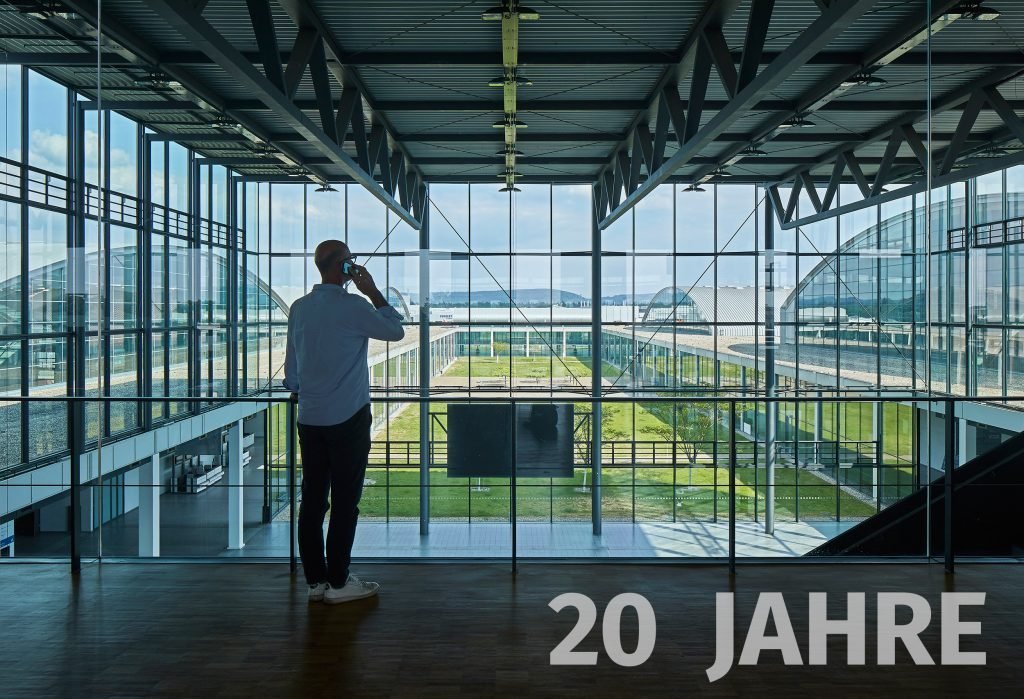
The article on Focus Online provides an insight into the history and development of the event hall, whose striking, cantilevered roof at the main entrance was designed by Gerber Architekten.
The arched, wooden roof structures above the symmetrically arranged exhibition halls not only enable efficient use of space, but also create an inviting architecture that integrates the Black Forest landscape into the trade fair experience.
Since the completion of our project 20 years ago, more than 1800 events have taken place, attracting around 10 million guests. Today, the exhibition center is regarded as a central meeting point for trade fairs, congresses and events. It welcomes up to 750,000 visitors and around 8,000 exhibitors every year, including international participants.
Messe Karlsruhe is not only a place of innovation, but also a symbol of economic success in the region. We would like to congratulate the company on its 20th anniversary and look forward to many more successful years as a partner in the realization of forward-looking event venues.
The article can be accessed via the following link:
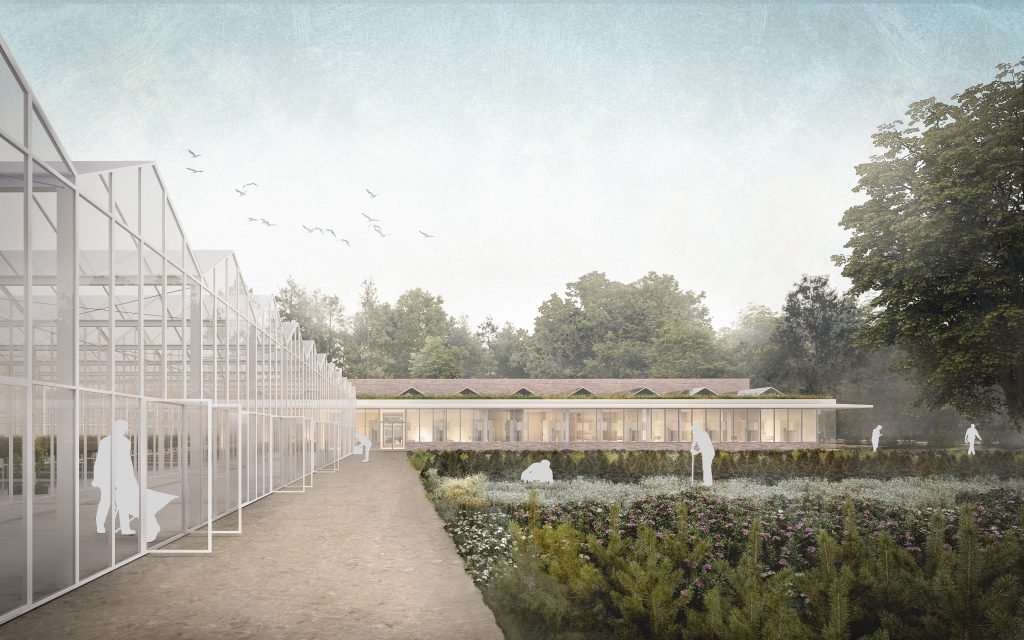
© Gerber Architekten
The competition brief was complex: a historic villa was to be renovated, the outdoor facilities restored and a new laboratory building and greenhouses built in the listed ensemble of the Thünen Institute. In the restricted competition, our design impressed with its flowing transition to the park and its largely single-storey design. The new laboratory building forms a U-shaped unit with the greenhouses and creates a large open space. The natural outdoor space is connected to the interior via a circumferential glazing and the view to the neighbouring arboretum is opened up. With its clear geometry and functionality, the new ensemble allows the historic park to take centre stage. “In a natural and convincing way, the design is able to trace and strengthen the spirit of the place,” was the judgement of the jury.
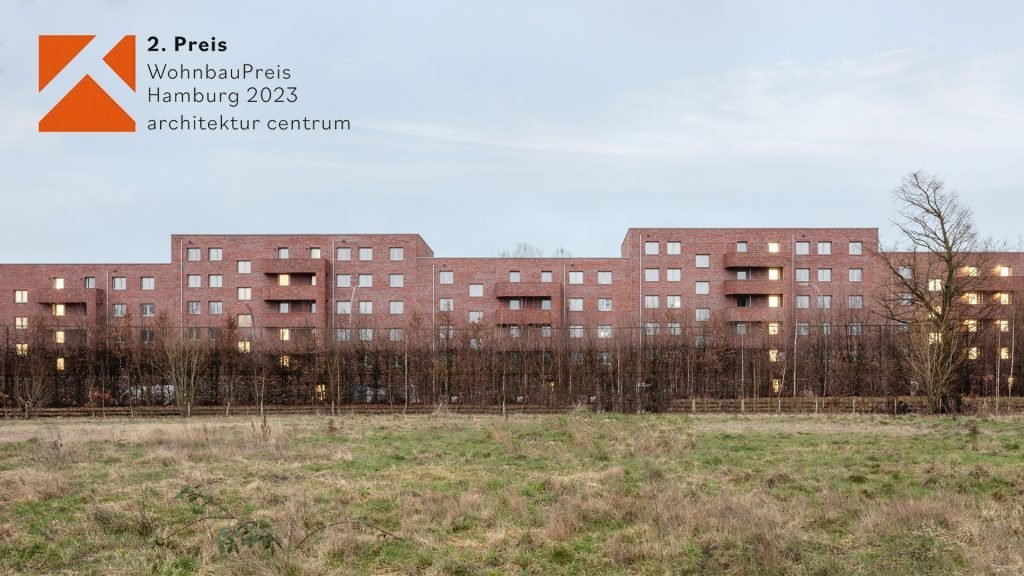
Our project is characterized by a unique design in which two contrasting facades merge together. On the street side, a reddish clinker brick is reminiscent of the adjacent Stellingen town hall, while the garden façade with transparent balconies creates a light and airy ambience. Thanks to clever projections and recesses as well as different staggered heights, the building complex, which is over 190 meters long, blends harmoniously into its surroundings and offers 123 one- to four-room apartments of exceptional quality. The sound-absorbing function along the sports field ring also ensures additional living comfort.
The new building not only contributes to the identity of our city, but also improves the quality of life of its residents. It is an example of how architecture can have a positive influence on urban development and the social fabric.
Our thanks go to SAGA Siedlungs-Aktiengesellschaft Hamburg, our committed client, and the entire team that worked on this project. This award is recognition of our efforts to shape the future of housing.
Together we are shaping the future of modern living and making a lasting mark on the city of Hamburg.
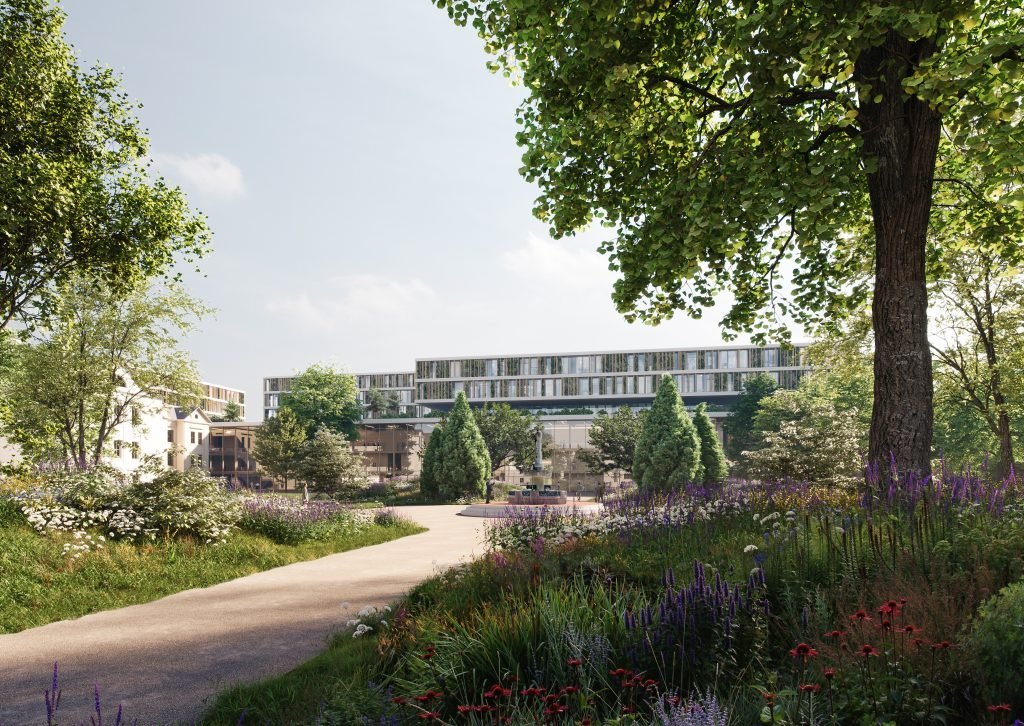
© Gerber Architekten
As part of the modernisation of Vienna’s clinics, an EU-wide open design competition has been held for the overall development of the Hietzing Clinic. The first clinic founded by the City of Vienna is not only to be rebuilt, but also changed in terms of content and organisation.
Our design for the overall development is conceived as a sustainably designed hospital landscape. The 830-bed hospital concept is characterised by short distances and its integration into the large hospital park. Four storeys for examination and treatment form a base on which three and two-storey bands of nursing wards are arranged in a loop. A magistral cascading according to the topography of the site forms the “heart” of the new central building. The four connected nursing wards are thus linked to a central ward hub. In the spirit of “healing architecture”, the different natural spaces of the hospital park are integrated and continued into the southern depths of the building via 3 inner courtyards planted as main orientation and access bays.
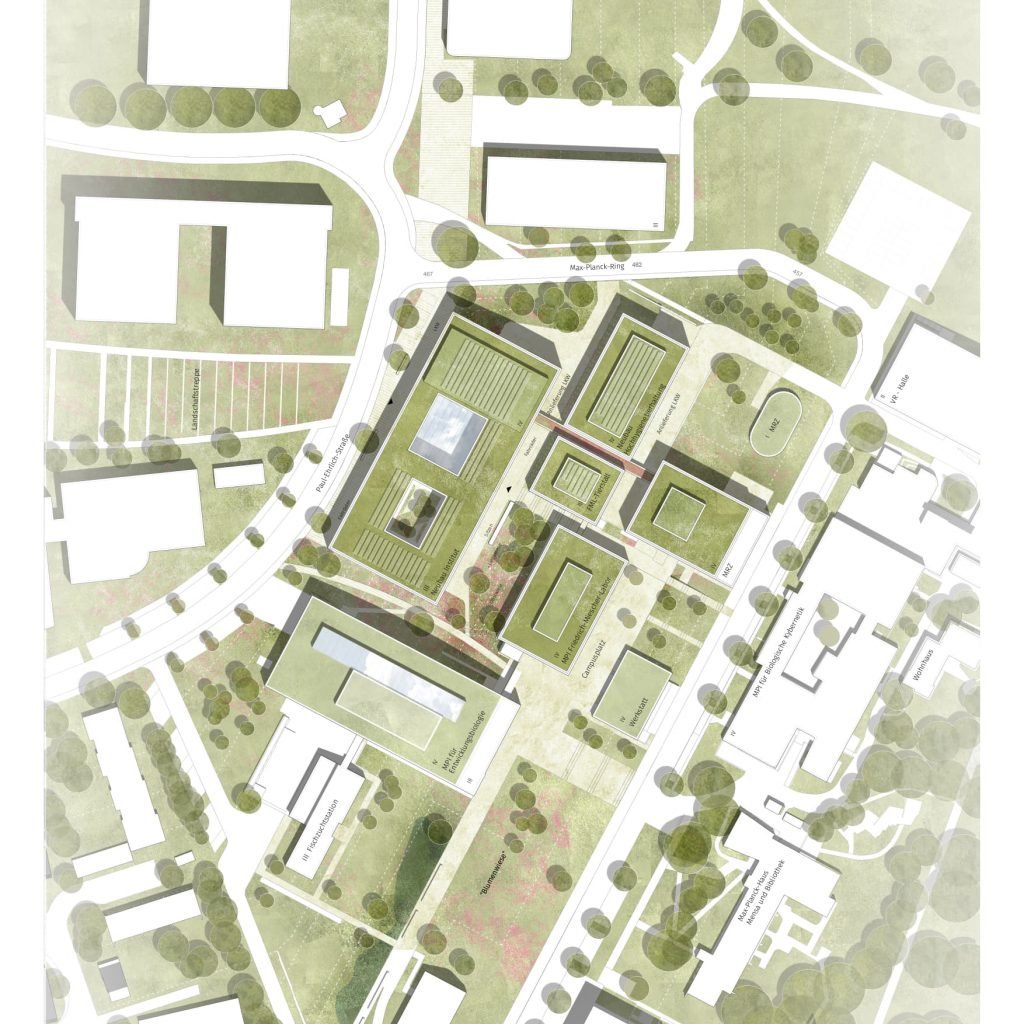
Gerber Architekten has won the VGV procedure for the extension of the Max Planck Institute for Biological Cybernetics in Tübingen. The Max Planck Institute for Biological Cybernetics conducts research into information processing in the human and animal brain. It is part of the Max Planck Campus in Tübingen, where over 1200 employees work and conduct research.
Our expansion concept includes a new institute building and a highly hygienic animal facility. The compact institute building is clearly structured. A foyer hall in the centre is adjoined to the north by the flexibly usable laboratory area and to the south by the office wing arranged around a green inner courtyard. An interior bridge structure provides the connection to the high hygiene animal husbandry and from there to the existing stable building.
The entrance to the main building is located in a visual axis with the old observatory and the planetary park, which merge into one another via a landscape staircase. From the generously glazed foyer as a place for internal communication within the institute, visitors are led to the centre of the campus. This clear and rational structuring and integration represents the core idea of the design.
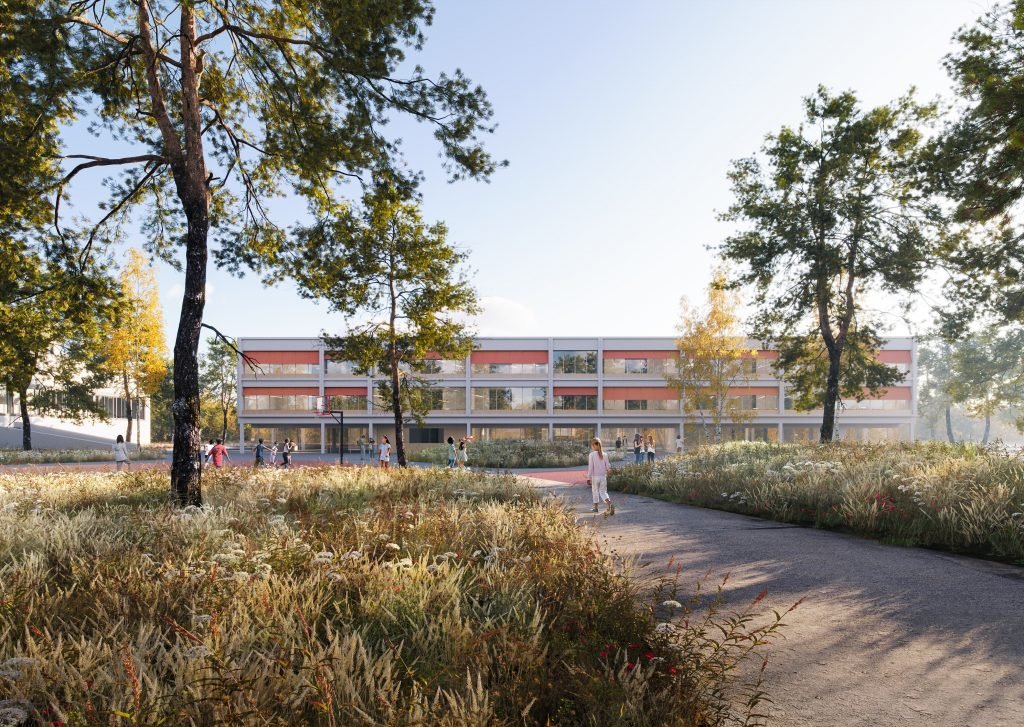
Preserving as much of the existing building ensemble as possible forms the conceptual starting point for our extension design for the Brüder Grimm School. An identical block serves as an extension, which connects to the refurbished existing building via a glazed joint. The resulting three-storey building complex contains four learning clusters. Each cluster consists of five classrooms and a team room, which are connected by a common centre and serve as open and flexible co-learning areas. By minimising the footprint of the new building, the tree structure of the schoolyard and the surrounding area will remain virtually unchanged. With a relatively small “footprint”, this creates a future-orientated learning environment that blends harmoniously into an overall picture.
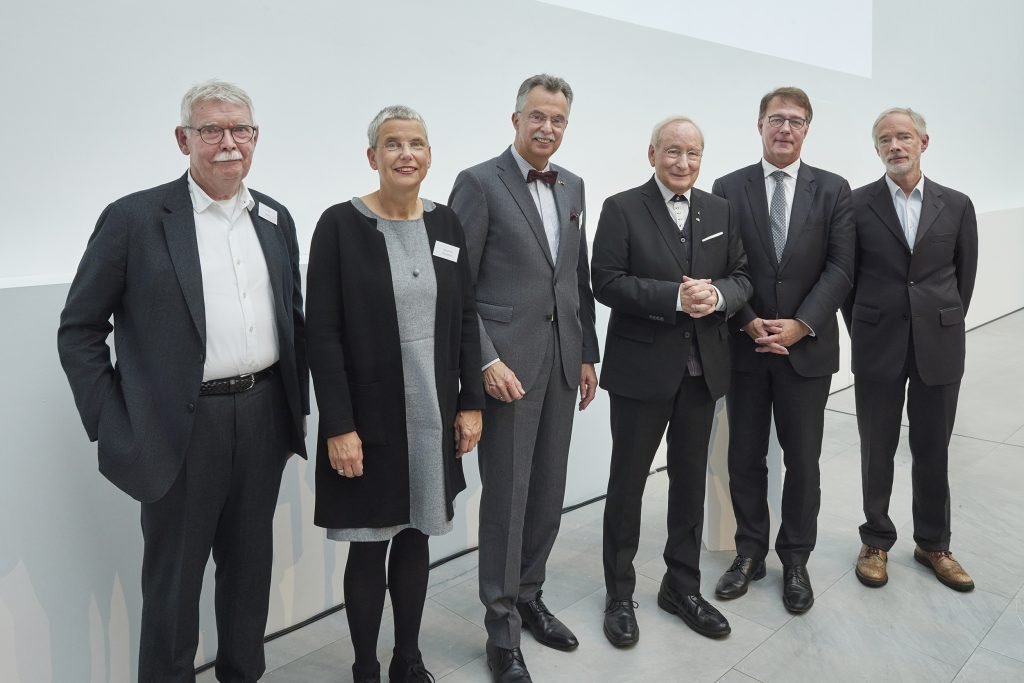
On the occasion of Prof. Eckhard Gerber’s 85th birthday, a celebration took place at the Baukunstarchiv NRW. In the past more than 50 years, Gerber has realised more than 300 projects as an architect and landscape architect – and at the same time developed the architectural office founded in 1966 as a two-man start-up into a company with 340 employees in Germany, China and Saudi Arabia. The conceptual approach of his work is always characterised by a holistic vision and a sense of sustainability, emphasised the numerous speakers. Prof. Gerber was also awarded honorary membership of the Sponsoring association of the Baukunstarchiv North-Rhine-Westphalia for his special commitment to the preservation and conversion of the former Museum am Ostwall in Dortmund. Susanne Wartzeck, President of the BDA, paid particular tribute to Gerber’s responsible planning and actions in the face of the social and ecological challenges of contemporary architecture.
(from left to right: Chairman of the Sponsoring association of the Baukunstarchiv North Rhine-Westphalia Prof. Dr. Franz Pesch, BDA President Susanne Wartzeck, AKNW President Ernst Uhing, Prof. Eckhard Gerber, Managing Director Autobahn GmbH des Bundes Gunther Adler, Scientific Director BKA NRW Prof. Wolfgang Sonne)